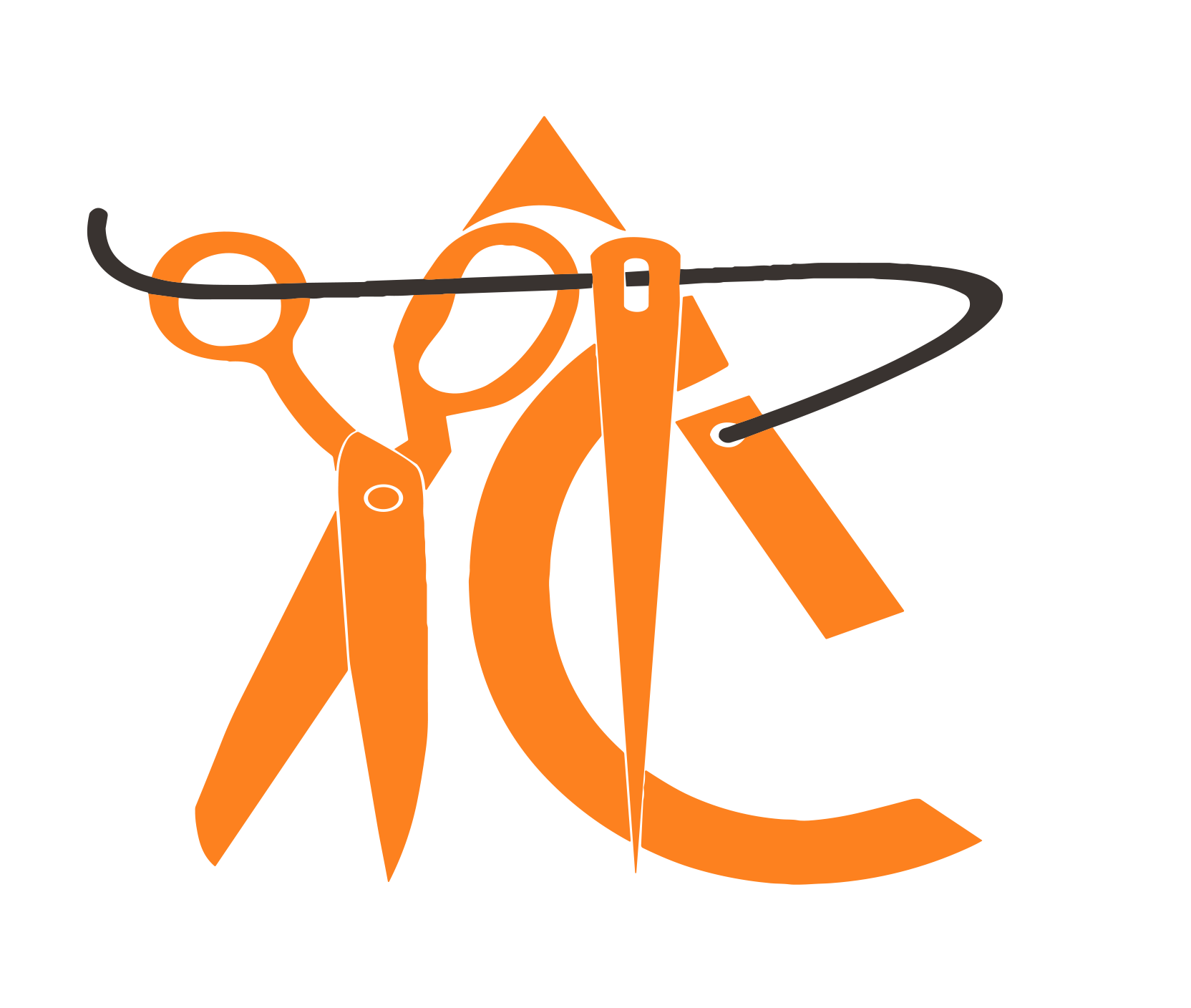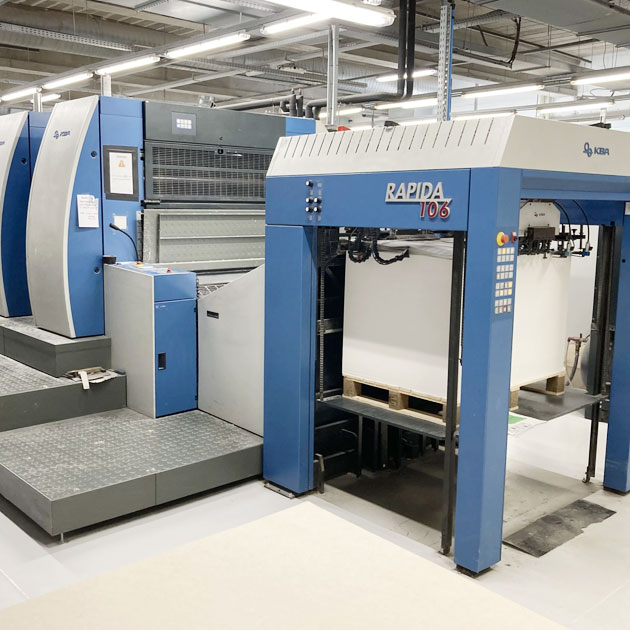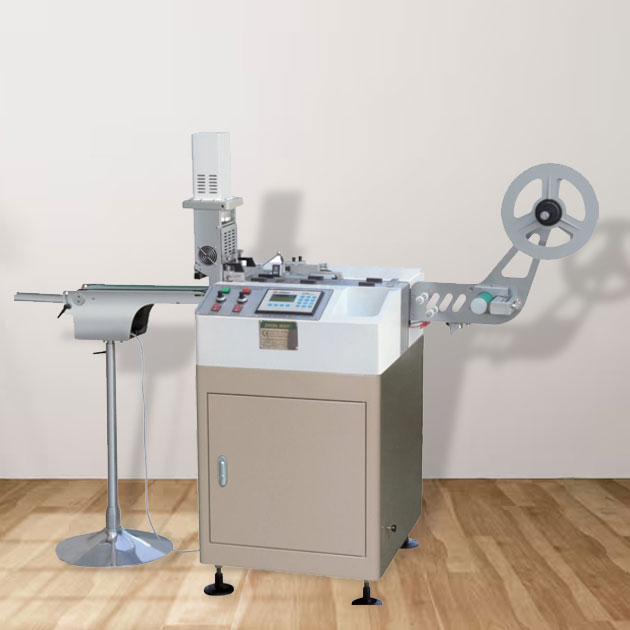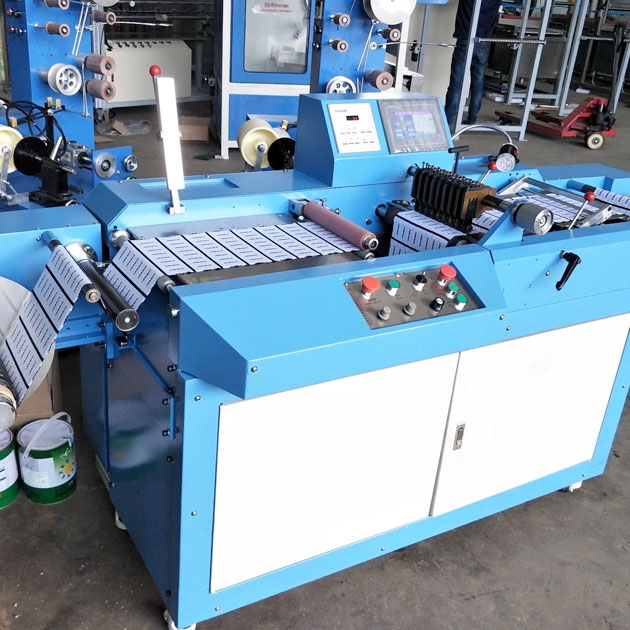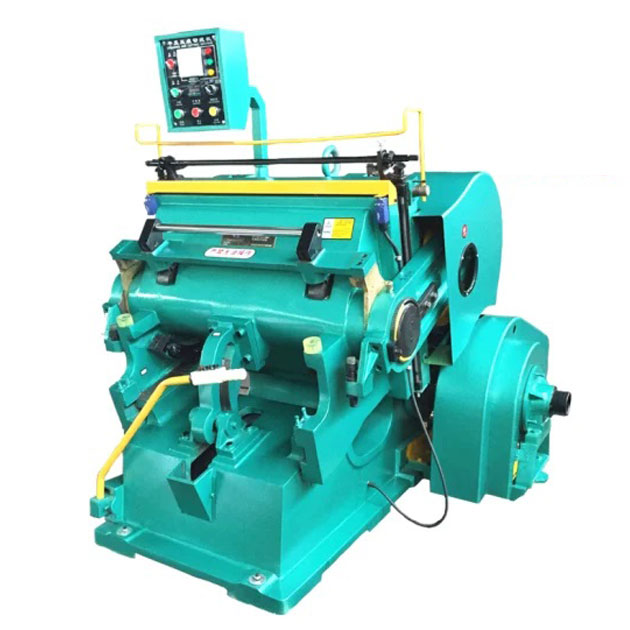Infrastructure & Capabilities
We are equipped with advanced technology and a strong infrastructure that allows us to deliver high-quality labeling and branding solutions for the garment industry. Our production is carried out entirely in-house, ensuring consistency, efficiency, and precision
Rotary Machines
A multi-color 6+2 rotary printing machine is a high-speed textile printing system designed for precision, versatility, and large-scale production. The “6+2” configuration indicates six primary color stations plus two auxiliary stations, which can be used for special effects such as functional finishes. This setup makes the machine ideal for complex, high-quality fabric designs requiring both vibrant colors and advanced surface treatments.
Key Operations
- Fabric Feeding
- The fabric is automatically fed into the machine and guided with high accuracy to maintain consistent alignment before printing.
- Color Application
- Each color is transferred through its own rotary screen.
- Internal squeegees push ink through the open mesh areas of the screen, ensuring sharp and uniform color application.
- Precision Registration
- Advanced registration controls synchronize all rotary screens to guarantee exact color placement, preventing misalignment, overlaps, or gaps.
- Drying System
- Printed fabric passes through an integrated drying unit that rapidly sets the ink for durability and wash resistance.
- Rewinding
- The completed fabric is rewound in rolls, ready for post-processing, finishing, or direct use in garment production.
Advantages
- High Productivity: Continuous rotary operation supports mass production with consistent output.
- Design Versatility: Capable of handling intricate, multi-color designs with fine detail.
- Consistency: Maintains sharp registration and color accuracy even at high speeds.
- Customization: Auxiliary stations expand creative and functional printing possibilities.
Woven Machines
Woven label machines are specialized textile machines that produce durable, high-quality labels. Instead of printing, these machines weave yarns together to create labels with intricate designs, text, or logos. The result is a fabric label that is long-lasting and resistant to fading or wear.
Operation Process
- Warp Preparation
- Yarn is wound and prepared on a warping machine.
- The prepared yarn is then loaded into the shuttle or creel of the weaving machine.
- Design Input
- The label design (logo, text, or pattern) is programmed into the machine.
- Depending on the machine type, designs may be input via punched cards (older systems) or digital software (modern systems).
- Weaving
- The machine interlaces warp (longitudinal) and weft (transverse) yarns according to the programmed design.
- This process produces a continuous woven fabric strip containing repeated label patterns.
- Cutting and Folding
- The continuous woven strip is cut into individual labels.
- Specialized equipment folds the labels into the required format (e.g., centerfold, end fold, mitre fold, or straight cut).
- Quality Control
- Each label undergoes inspection for weaving defects, misalignment, or color inconsistencies.
- Approved labels are then sorted, packaged, and prepared for delivery.
Output:
The woven label machine produces finished, cut, and folded woven labels, ready for direct attachment to garments or other products. These labels are valued for their durability, precise design clarity, and professional appearance. They are widely used for brand identification, size markings, and care instructions, making them an essential component in the textile and apparel industry.
Weaving Machines
A cotton tape weaving machine is a specialized textile machine designed to produce narrow woven fabrics such as tapes, ribbons, and straps from cotton yarn. Typically based on needle loom technology, these machines interlace warp and weft threads to create continuous, durable fabrics. They are engineered for high-speed production, with adjustable weaving widths, tape thicknesses, and programmable pattern options. Thanks to their versatility, cotton tape weaving machines are widely used in apparel, home textiles, packaging, and industrial applications.
Key Mechanisms:
- Shedding – Separates warp yarns into layers, creating a shed for the weft insertion.
- Picking – Inserts the weft yarn through the shed.
- Beat-up – Pushes the inserted weft into position to form the fabric.
- Warp Let-off – Controls the release of warp yarn from the beam.
- Cloth Take-up – Winds the finished tape onto a roll in a uniform manner.
Output:
- Produces narrow woven cotton tapes with firm and uniform edges.
- Tapes can be further processed, cut, rolled, dyed, or finished depending on application.
Applications:
- Garment industry – drawstrings, waistbands, labels.
- Medical textiles – bandages, bindings, support straps.
- Home textiles – curtain tapes, upholstery finishing.
- Industrial use – strapping, binding, packaging.
Offset Machines
Offset printing is a high-quality and high-speed method widely used for producing books, magazines, packaging, and promotional materials. It works by transferring inked images from metal plates to a rubber blanket, and then onto paper or other substrates. For multi-color jobs, the process enables precise layering of different colors (usually CMYK) in one pass.
1. Pre-Press (Image Preparation)
- The original design is digitally separated into its component colors: Cyan, Magenta, Yellow, and Black (CMYK).
- A printing plate is created for each color using computer-to-plate (CTP) technology.
2. Plate Mounting
- Each color plate is mounted on its respective plate cylinder in the press.
- Alignment and registration are carefully adjusted to ensure precise color overlap.
3. Inking and Dampening
- Ink rollers apply oil-based ink to the image areas of each plate.
- Dampening rollers apply a thin film of water to the non-image areas, which repel ink and keep backgrounds clean.
4. Image Transfer to Blanket
- The inked image is first transferred from the plate onto a rubber blanket cylinder.
- The blanket provides flexibility, allowing the image to print smoothly on various paper textures.
5. Printing (Impression Stage)
- Paper (or another substrate) passes between the blanket cylinder and the impression cylinder.
- The image is transferred from the blanket onto the sheet with consistent pressure and accuracy.
6. Drying and Finishing
- Depending on the ink type (conventional, UV, or hybrid), the printed sheets are dried using air, heat, or UV lamps.
- The final sheets can then be processed further: cutting, folding, binding, varnishing, or laminating to achieve the desired product.
Ultrasonic Machines
An ultrasonic label cutting machine uses high-frequency vibrations to precisely cut and seal the edges of labels, preventing fraying and ensuring a clean, professional finish. Designed for versatility and efficiency, these machines handle a wide range of materials and label sizes, while significantly improving production speed and quality.
Operation & Functions
1. Cutting and Sealing
- The ultrasonic horn (blade) vibrates at a high frequency, creating a shearing effect.
- This process cuts through the label material while simultaneously sealing the edges, eliminating fraying or loose threads.
2. Precision and Cleanliness
- Ultrasonic cutting delivers highly accurate, clean cuts.
- Finished labels maintain a professional appearance with smooth edges.
3. Versatility
- Capable of cutting fabrics, ribbons, tapes, and other flexible materials.
- Adjustable settings allow for different label sizes and shapes.
4. Efficiency
- Ultrasonic technology supports high-speed production.
- Cutting and sealing in a single operation reduces manufacturing time.
5. Material Handling
- Many machines are equipped with:
- Automatic feeding
- Label counting
- Stacking systems
- These features streamline workflow and reduce manual labor.
6. Optional Features
- Advanced models may include:
- Electrostatic discharge systems to prevent labels from sticking.
- Customizable control settings for specific production needs.
Label Cut seal Machines
Main Purpose
These machines are designed to process woven and printed labels by cutting them to length and folding them into specific styles.
Key Operations and Functions
- Unwinding
- Label material (usually in roll form) is unwound and prepared for processing.
- Feeding
- The machine advances the label material with precision through each stage.
- Tracing / Mark Detection
- Sensors (e.g., mark tracers) detect printed registration marks for accurate alignment before cutting.
- Cutting
- Labels are cut to the desired length.
- Methods include ultrasonic cutting (clean edge, prevents fraying) and hot cutting (seals edges with heat).
- Pressing
- A plate press can be applied to prevent fabric shrinkage during cutting.
- Folding
- Labels are folded automatically according to the chosen style.
- Stacking
- Finished labels are neatly stacked.
- Some machines use stacking assists and sponge mechanisms to align labels properly.
- Control Panel
- Operators can adjust temperature, speed, quantity, and fold type.
- Settings vary depending on label material (woven, satin, cotton, etc.).
Fold Types Supported
- End Fold – edges folded inwards at both ends.
- Center Fold – folded in the middle (commonly used for clothing labels).
- Tag Fold – folded like a tag, often with extra length.
- Miter Fold – diagonal fold at the ends, often for hanging labels.
- Piece Cutting – cut without folding.
Advanced Features in Modern Models
- Automatic label recognition.
- Auto-stop function when labels are missing, misaligned, or defective.
- Memory settings for multiple label jobs.
Some models integrate with digital printing workflows.
Label Folding Machines
Main Purpose
These machines are designed to process woven and printed labels by cutting them to length and folding them into specific styles.
Key Operations and Functions
- Unwinding
- Label material (usually in roll form) is unwound and prepared for processing.
- Feeding
- The machine advances the label material with precision through each stage.
- Tracing / Mark Detection
- Sensors (e.g., mark tracers) detect printed registration marks for accurate alignment before cutting.
- Cutting
- Labels are cut to the desired length.
- Methods include ultrasonic cutting (clean edge, prevents fraying) and hot cutting (seals edges with heat).
- Pressing
- A plate press can be applied to prevent fabric shrinkage during cutting.
- Folding
- Labels are folded automatically according to the chosen style.
- Stacking
- Finished labels are neatly stacked.
- Some machines use stacking assists and sponge mechanisms to align labels properly.
- Control Panel
- Operators can adjust temperature, speed, quantity, and fold type.
- Settings vary depending on label material (woven, satin, cotton, etc.).
Fold Types Supported
- End Fold – edges folded inwards at both ends.
- Center Fold – folded in the middle (commonly used for clothing labels).
- Tag Fold – folded like a tag, often with extra length.
- Miter Fold – diagonal fold at the ends, often for hanging labels.
- Piece Cutting – cut without folding.
Advanced Features in Modern Models
- Automatic label recognition.
- Auto-stop function when labels are missing, misaligned, or defective.
- Memory settings for multiple label jobs.
Some models integrate with digital printing workflows.
Card Board Diecut Machine
A die-cutting machine is used to precisely cut materials into specific shapes with the help of a sharp die. In tag manufacturing, it plays a key role by cutting tag shapes from materials such as paper, cardboard, or even fabric. The process involves placing the material beneath the die and applying pressure—either manually or mechanically—to achieve the cut. This method ensures consistent, accurate results and allows for the creation of both simple and intricate tag designs.
A die cutting machine uses a shaped metal cutter (called a die) to cut materials into precise shapes. By applying controlled pressure, the die presses through the material to create consistent, clean cuts. These machines are versatile and can handle cardboard, paper, fabric, thin plastics, and more. Common processes include through-cutting, kiss-cutting, perforating, scoring, and creasing.
Printing Capabilities :
We can print up to 8 colors on a wide range of materials
including:
- Natural organic flat cotton
· Natural cotton twill
· Polyester
· Satin
· Taffeta
· Elastic
Woven Capabilities:
Our woven label machines allow weaving of up to 8 colors,
producing vibrant and long-lasting labels.
Design & Expertise:
Our team of skilled designers and technicians ensures every label, tag, and
woven product accurately reflects your brand identity and product information.
Infrastructure & Efficiency:
- Fully equipped with the latest machines and
technology - Divided into specialized units for maximum
efficiency - Managed by experienced professionals
- Large-scale production capacity within set
timelines
With our commitment to quality, innovation, and timely delivery, we provide
labeling solutions that not only meet but exceed industry standards.
Our Strengths
- Well-trained staff to operate modern machinery
- Complete in-house operations for all
developments - Strong administration support
- Skilled designers for:
Printed Labels (CorelDRAW)
Woven Labels (Mucad)
- Dedicated marketing team
- Strict quality control checks
